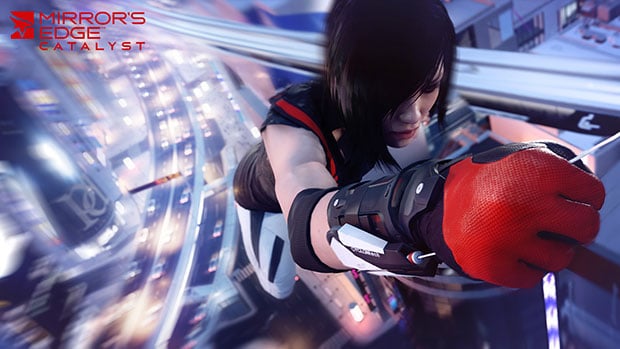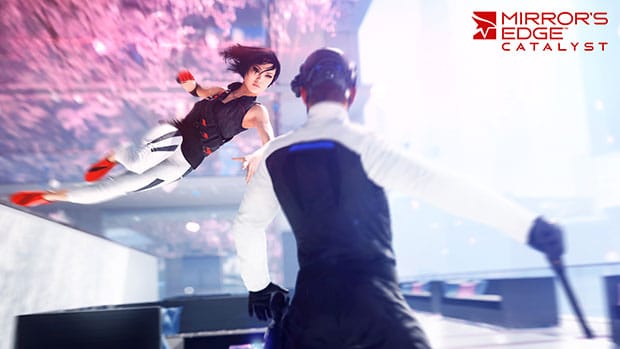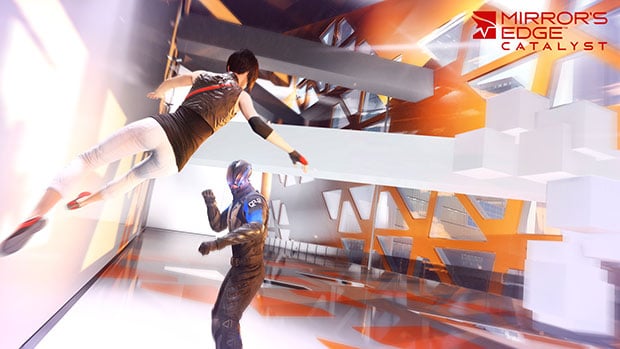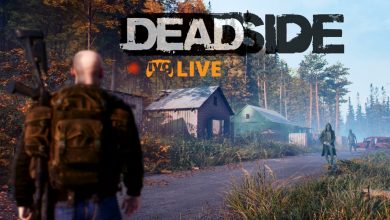For fans of Mirror’s Edge, the announcement of Mirror’s Edge Catalyst in 2013 was exciting, but also a little worrying. Exciting because this was one of the boldest games to have come out of the triple-A industry in the previous generation, fusing platforming with a first-person perspective in a way that no game had done before, and taking combat out of the equation almost entirely. The game had its issues, but it earned a strong fan base purely on the back of powerful core gameplay that still holds up today.

The worrying part was that Mirror’s Edge wasn’t a commercial success; not by EA’s standards anyway. The core team that built that game left DICE soon after and EA ruled out an immediate sequel, saying on numerous occasions that if it was to revisit the franchise, it would have to rethink the very essence of the what Mirror’s Edge was. So much so that the two words Mirror’s Edge fans dreaded the most were thrown around in the media – “third person”.
So it was surprising – in the best way possible – that when we finally got our hands on Mirror’s Edge Catalyst, it felt instantly familiar. DICE hasn’t messed with any of what made Mirror’s Edge such a joy to play. The momentum-driven first-person parkour movement, the pristine city awash in white with a peppering of piercing bright colours, and gameplay that focussed on flight over fight – this is, at its core, the Mirror’s Edge fans know and love, but dig deeper and many of the changes creep up on you.

For starters, Mirror’s Edge Catalyst is set in an open world – the City of Glass. Catalyst is not a sequel to the 2008 franchise debut, but rather a reboot. DICE is wiping the slate clean and telling a different story from the point of view of protagonist Faith. The city is still governed by corporations, everything is controlled and monitored, and Faith is still a runner, but rather than being a courier, in Catalyst, she’s a thief, taking on jobs on behalf of various clients. Little else is known about the story, and we don’t mind waiting till February to find out, because we had more pressing matters to attend to i.e. getting the controller in hand and finding out how Catalyst actually plays.
First off, running feels just as exhilarating in Catalyst as you might remember, but DICE has simplified the controls to the point where you’ll only need one bumper and one trigger to get around. That said, more advanced moves will require some finger gymnastics just as in the first game. What does feel different is how Faith now vaults over barriers, giving her a speed boost and greater elevation. It feels great and you’re able to build momentum much more easily. It’s also a lot more forgiving to players who aren’t able to keep their momentum up. You can now perform moves like wall runs even when you aren’t at full steam. It may not be as realistic but doesn’t feel odd either, and it’s in the interest of keeping you moving, so we’re all for it. You’ll also now be able to swing around corners using pipes and other objects, and this also ties into chaining movement with combat.

Faith is not a fighter, and unlike the first game, she can’t even pick up a gun, let alone carry one. What she can do, however, is use her speed and momentum in melee combat. The devs like to refer to Faith as a projectile and that’s exactly how it feels. Her attacks are more about speed and efficiency than brute force. While the game constantly encourages you to run rather than fight, Faith is now more than capable of holding her own against guards, just as long as she doesn’t stay still.
One of the major complaints from the first game was how it was easy to get lost in a level when you were at full steam. To some degree that could still be the case in Catalyst, especially with the open-endedness of the game world, but DICE has tweaked Runner Vision to help with this. You can now set waypoints to a location on the map you want to go, and the game will highlight objects in the environment leading you through the optimal path there, leaving you to only worry about the running. Optimal isn’t always the most fun though, so you’re still free to find your own way around and Runner Vision will alter its prompts to fit your new route. As with the first game, there are lots of shortcuts and more difficult ways to get around, so if you’re feeling adventurous, you can disable Runner Vision entirely.

The game starts out in a small section of the city and gradually opens up new districts as you complete story missions. Eventually the entire city will be your playground. Once it does open up, there’s plenty else to do, from finding hidden collectibles to hacking billboards (getting to them being the real challenge) to time trials. The game also now features environmental puzzles, which essentially require Faith to get from A to B in an elaborately designed space. Think of them as a more abstract first-person version of the catacombs from Assassin’s Creed 2. The game will also involve some sort of social element, but DICE isn’t talking about that just yet.
One of the additions that has us intrigued is the ability to upgrade Faith’s glove. The upgrade that we got to try out was a grappling hook-like ability that lets you swing across rooftops seemingly using a magnetic property in the glove. Aside from giving you more options to get around quickly, upgrading Faith’s glove will also allow you to access parts of the city you couldn’t reach before, giving you more reason to explore and revisit places you’ve already been. DICE hasn’t quite opened up about exactly how much of the city is explorable, but the devs have said that you’ll be able to enter buildings, and you’ll be able to do it all without a single loading screen. No more long elevator rides.
So the question remains – will Mirror’s Edge Catalyst be able to win over those who didn’t quite get into the first game? The new Runner Vision and tweaks to the gameplay that make it easier to maintain a flow will definitely make it more accessible. But none of that has come at the expense of what made Mirror’s Edge great. For fans and expert players, DICE is still promising the same depth the first game offered. And there was evidence of that in our demo. We were able to use the wall jump flip move to find hard-to-reach areas, which in the first game opened up a whole world of opportunities for negotiating a level or getting around faster.
DICE does seem to be pulling off this balancing act quite well. What remains to be seen though is how it can manage to make this open-world – one without NPCs and vehicles – not feel barren, and tell an interesting story along the way, something it failed to in the first game.
Mirror’s Edge Catalyst is scheduled for release on 23rd February 2016 for PC, PS4 and Xbox One. You can pre-order the digital PC version at G2A.com



